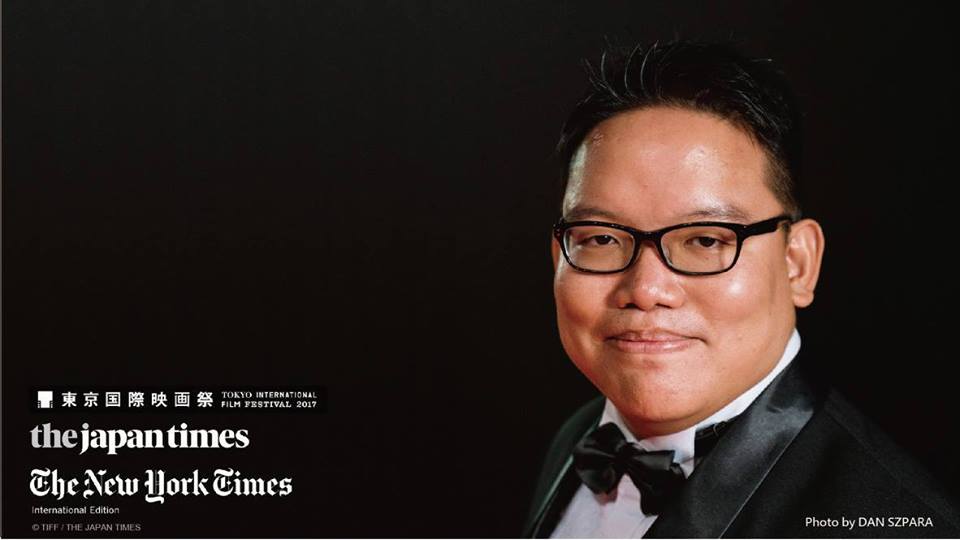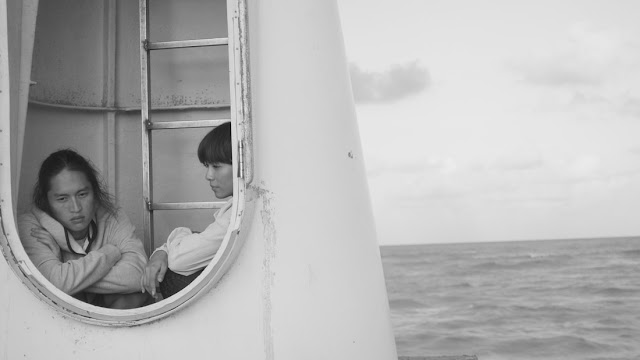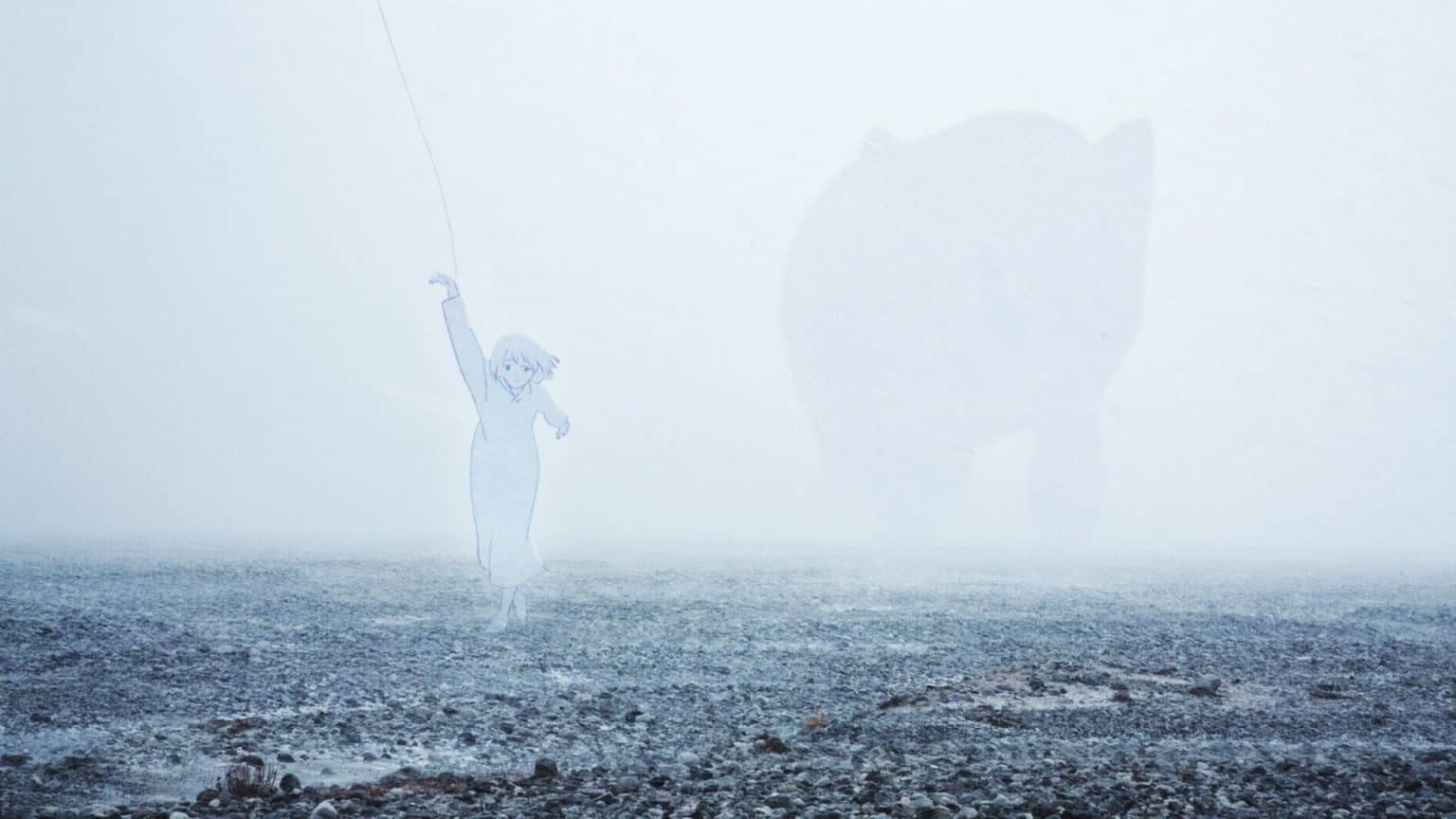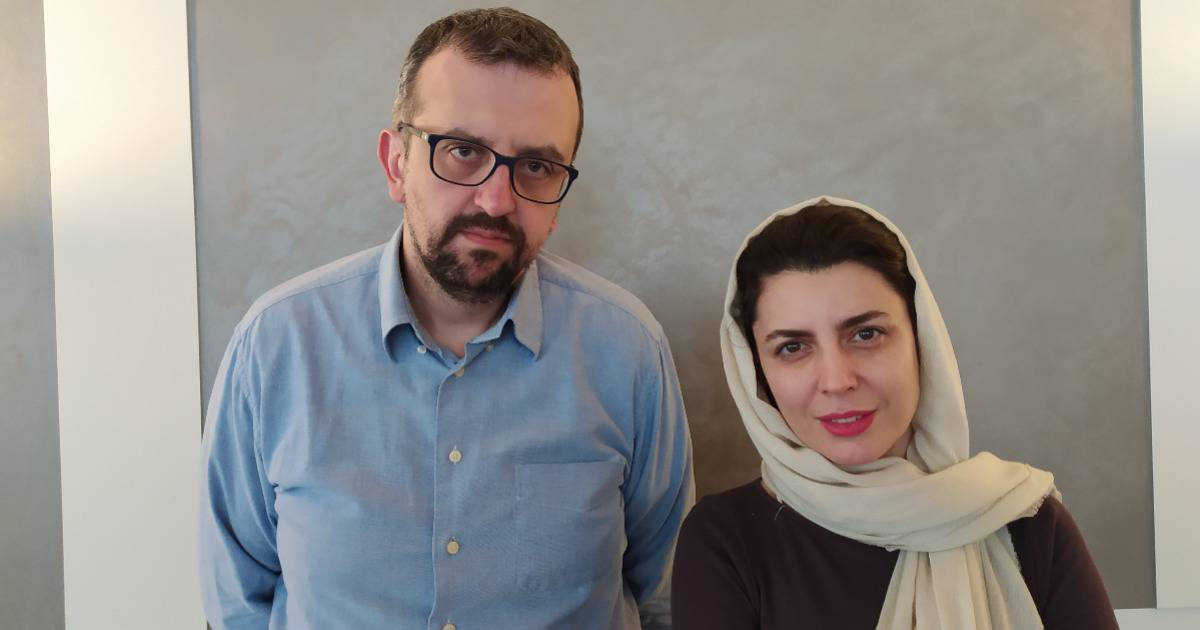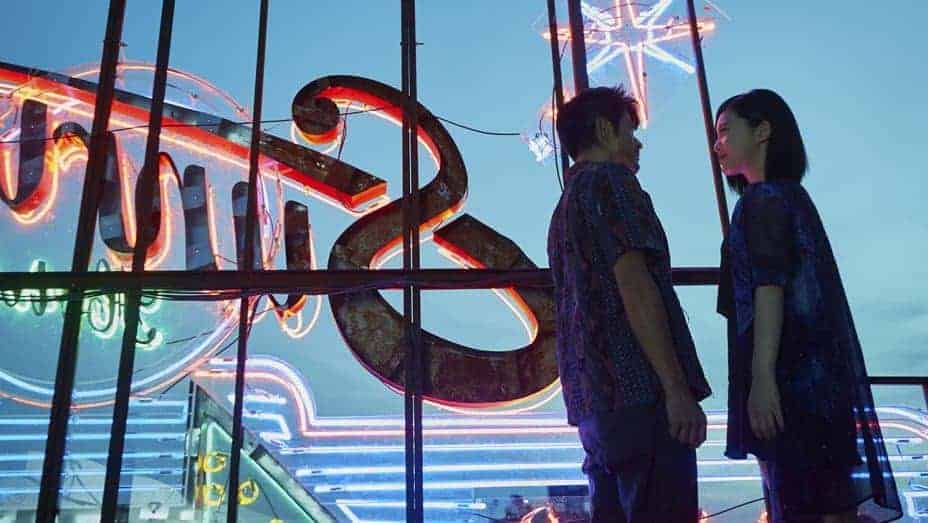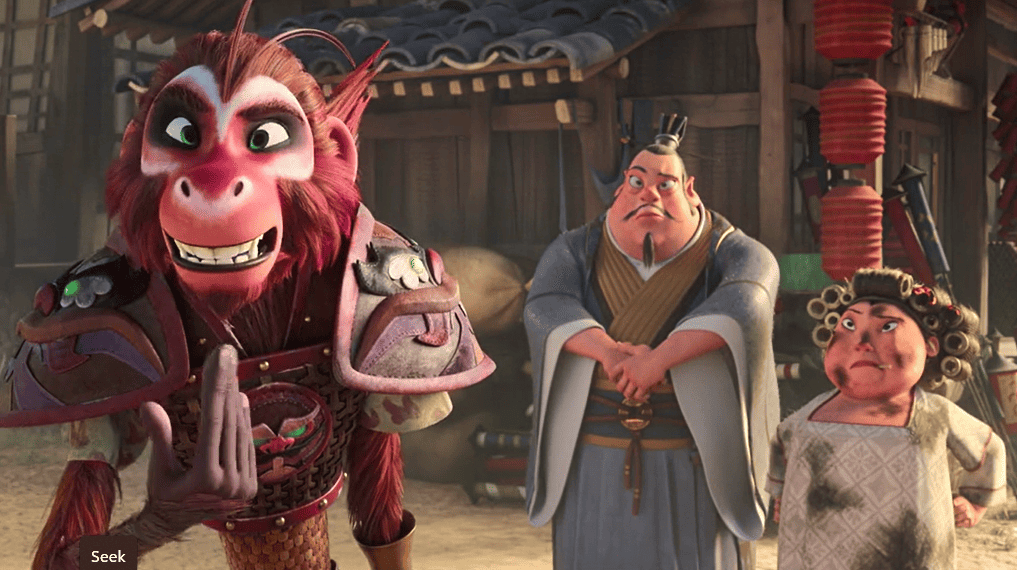The interview was conducted January, 2018
Edmund Yeo was born in Singapore in 1984, and graduated from Waseda University. His short films “Kingyo” premiered at the Venice Film Festival 2009; “Inhalation” won the Sonje Award at the Busan International Film Festival in 2010. His debut feature “River of Exploding Durians” premiered in competition at the Tokyo International Film Festival 2014. This year he returned to Tokyo with two films, “Yasmin-san”and “AQÉRAT” (We the Dead), with latter earning him the Best Director Award.
We speak with him about “Aqerat”, the award, his career and many other topics.
Congratulations on winning Best Director at the Tokyo International Film Festival. How do you feel about this honour?
I was absolutely overwhelmed, especially because I was aware of the history of the film festival. Since 2008, I have attended the festival as a student, and an audience, before going as a filmmaker. Aside from being its 30th edition, the festival had given the same award to some of my cinematic heroes, Innaritu, Wu Tianming, Ruben Ostlund, Yim Ho, Guy Ritchie. So it was absolutely unbelievable to be on the list with them.
When I received the trophy from the great Iranian filmmaker Reza Mirkarimi (who was also a previous best director winner), I was mostly thinking of the festival history, and the greats who came before me. I thought of my 10-men crew and handful of cast members, and I thought “we did it, wow”. I wanted so much to let them know that everything we had been doing, despite the pain, there's still a place for the type of films we make.
Your father is a film critic and music producer and your mother a pop singer. How did their lives influence your career and had they anything to do with you becoming a filmmaker?
Αbsolutely, I am doing what I'm doing because I was influenced by them. I was exposed to showbiz ever since I was a child, and also raised by their love for cinema. My dad had a library of films, books, film magazines etc which I would pore over voraciously due to my curiosity.
And because they were doing what they did, they don't really have that irrational bias against films, arts and culture which most people of their generation in my country would have. Normally, parents would just discourage their children to chase their dreams and go for something more financially stable. I know it's for the well-being of their children, but this indirectly created a sort of disrespect and prejudice against what we do.
Tell us a bit about Greenlight Pictures.
Greenlight Pictures is a production company founded in 2006 by director Woo Ming Jin for the making and distributing of his sophomore film THE ELEPHANT AND THE SEA. We met in 2007, got along pretty well and I joined him during post production. So we have been working together since then as creative partners. I produced, co-wrote and edited his subsequent films like WOMAN ON FIRE LOOKS FOR WATER and THE TIGER FACTORY. He too served as producer or exec producer of my short films and features.
Two films of yours are streaming through Filmdoo. What is your opinion on the streaming platforms, and what do you think filmmakers gain from them?
Actually I'm okay with streaming if it allows more works by filmmakers to be discovered. Before I started making films 10 years ago, I was vlogging and trying out YouTube and its clones which came out around the same period (none of them lasted). So I do embrace streaming, in fact I'm actively moderating the Greenlight Pictures YouTube channel too, and been the one working to get our films on Amazon Prime (River of Exploding Durians is available online).
But at the same time, I have mixed feelings. I usually make my films with the big screen in mind, therefore I know the details will get lost somewhere when it's being viewed on a phone or a tablet. With the meditative pacing and nature of my works, I wonder too whether my films or say, films such as mine, are the right films for streaming platforms, or that it's getting the right audiences.
I still feel that the big screen experience cannot really be replicated, and that it's better to watch films without being distracted by other things. So, it'll be good if this option remains open for filmmakers.
Why did you decide to shoot a film about the Rohingya? What kind of research did you do on the subject and how close to reality are the events depicted in “Aqerat”?
My films are generally quite personal, either they are based on my memory, or personal observations of the world around me during that particular moment of my life. In the last few years, Malaysia was affected greatly by the Rohingya crisis. Although for decades we have always been a hub for (illegal) immigrants from neighbouring countries, be it Indonesia, Myanmar, Vietnam, the discovery of nearly 150 dead bodies at the northern region of Malaysia (close to the Malaysia-Thai border) was a wake up call. The traffickers were mostly Malaysians, they smuggled the Rohingya refugees into the country but put them in jungle camps. The traffickers would then extort more money from them or their family before letting them continue their journey to, say, the larger cities like Kuala Lumpur. If they can't pay, they are either murdered or left to die in the camps. That was how their bodies were found. The amount of people involved in this was a larger scale than depicted in my film. The bodies were in fact discovered by police a few months before news went public, and it was hinted that some cover up from higher ups were involved.
It was crazy, while we are developing as a nation, we may have lost some of our humanity. This was what I wanted explore in “Aqerat.”
For my research, I read numerous reports and articles, and most of all, I interviewed numerous NGO, journalists who covered the Rohingyan plight and even a few refugees. I maintained contact with them online even after our first face to face meeting so that I can constantly ask them questions, and verify whether I got my facts right or not.
In the film, Hui Ling eventually starts enjoying her work in the human trafficking ring, before she comes to her senses a while later. Is this process connected with the title? In general, what does it take for a person to truly change, both towards becoming worse and better?
Yes, I think the title of the film (“afterlife” or “life after death” in Rohingyan language) was quite relevant to both the journey of the Rohingyan refugees, and also Hui Ling's personal journey.
The development of Hui Ling's character, in which she slowly started enjoying her work, came more from improvisation and discussion during the shooting of the film itself, and not the initial script. I keep a very democratic, open environment in my set, where cast and crew members can ask questions or voice suggestions anytime. Thus, Hui Ling's gradual enjoyment was something both actress Daphne and Lesly the cinematographer suggested to me. After all, life is a vicious cycle, those who started out being oppressed, when they grow into power, they start oppressing others. It's unfortunate, but it's a part of human nature.
The first part of the film unveils much like a documentary, but the second includes surrealism and is more art-house, in its aesthetics. Can you tell us a bit about these two approaches and why you chose to implement them both?
The entire structure of the film, especially the ending, was very much inspired by Roberto Bolano's novel “The Savage Detectives”. In that novel, it started with a coming of age story, then in the middle, it changed styles entirely by becoming a series of interviews with dozens of characters, before ending and returning to the initial story. The interviews and anecdotes helped to broaden the canvas of the novel, showing us what happened in the world around the characters who appeared in the first part, and spanning many decades.
Because it was such a monumental piece of work, after reading it in 2014, it lingered in my mind. So when I made this film, I found myself wanting to replicate its structure as well. Using the middle “arthouse” part to provide a context on the Malaysian life, because the first part followed Hui Ling's perspective very closely, so I wanted to show the world around her which she herself was unable to see, using other characters like Wei, Qi Qi, Wei's colleague etc.
Lesly Leon Lee's cinematography is great. Can you tell us a bout your cooperation with him? Also can you tell us a bit about how this image came about?
I'm very glad you like Lesly's work. Lesly and I had worked together since 2008, in my very first short film “Chicken Rice Mystery”, followed by “Love Suicides”, a 1-minute video for Prada, a horror short etc. We don't work together all the time, but we had been working together for a very long time. His style and mine complement one another very well.
As I started writing “Aqerat”, I knew that the film's aesthetics and style would make full use of Lesly's skills, as he himself favoured handheld cinematography, and he possessed a certain lyrical, poetic touch even though we were doing something realistic.
The black and white still, however, was taken by Cheng Thim Kian, he is our “Mr Everything”, working as line producer, assistant director, production designer and also the stills photographer. Therefore between takes, while we were waiting, he himself would take these stills for us. He is also a director of a few short films, I think he knows that taking these photos help his cinematographic eye.
Daphne Low is also very good in her part, as is the case with Kaho Hon. How did you guide them for their roles? How was the casting process like?
Daphne and I had worked together several times. Our first collaboration was the 2013 short film “Floating Sun” (which was also shot by Lesly). She then acted in my debut feature “River of Exploding Durians”, where she also played the character Hui Ling. Like most of my other longtime collaborators (Lesly, composer Woan Foong, the aforementioned Thim Kian etc) when we work together it was more like challenging one another to grow further. So I was curious to see how much Daphne had grown as an actress two years after we shot Durians, and after all the other experiences we had accumulated. It's sort of like a reunion for us, and it's always fun to do that.
As for the other cast members, whom I've never worked with before, I usually approach them based on what I saw in their previous works, or through auditions. When Kahoe was a teenager, he starred in the late Yasmin Ahmad's last film and short film, his potential was already there. And after taking a brief break for his studies, he returned to acting, and his potential and talent remained apparent in some short films and commercials he did. Therefore I approached him for the role, and that was how he joined us in our journey!
The other roles, like the traffickers and the refugees were casted based on auditions.
Can you tell us a bit the shooting of the film and the particular locations it was shot? Any memorable episodes, good or bad?
We shot in Kelantan, which is the Northern state of Malaysia, very close to the Malaysia-Thai border. Prior to the shoot, I have never been to the place before, therefore it was quite an adventure. Especially when I realized that we were going to shoot the film in the middle of the monsoon season. Culturally, the place is quite different from other parts of Malaysia. They speak in a very unique Malay dialect that is influenced a little by Thai, so many of us who came from Kuala Lumpur, we needed translators with us. It's a strange feeling to shoot a film in our own country where we needed to use translators, but it made the trip more memorable.
Because of the monsoon season, there were floods everywhere. I had to rewrite some scenes because it was too dangerous for anyone to get into the river!
What is your opinion of Malaysian cinema at the moment?
The Malaysian cinema has its ups and downs. I think we still have a lot to learn, and sometime to grow. Regardless of our achievements, filmmaking is still something we have to spend our entire lives to learn. Even if politically, economically, the odds aren't in our favour, we mustn't stop making films.
Which are your favorite filmmakers/films?
Ah, that's a tough question. There are some filmmakers whom I grew out of, and some whom I grew to appreciate more and more. There are those who remain on my list for a very long time. Most probably because I like most of their body of work instead of just 1-2 films they made, like Andrei Tarkovsky, Hirokazu Koreeda, Edward Yang, Hayao Miyazaki, Martin Scorsese, Paul Thomas Anderson, Wong Kar Wai, Spielberg, Ang Lee, Theo Angelopoulos, Lee Chang Dong, Pedro Almodovar etc..
There are many great films outside, from past and present, which I have yet to discover, and which I am excited to discover. In fact, it's only very recently that I started following the films of Ingmar Bergman, and the journey had been wonderful.
Could you tell me a bit about your future projects?
Before I went to Tokyo Film Festival, I have shot half of my new film called “Malu”. It's a family saga which spans decades, three generations and supposedly set in both Malaysian and Japan. I hope to finish it this year


